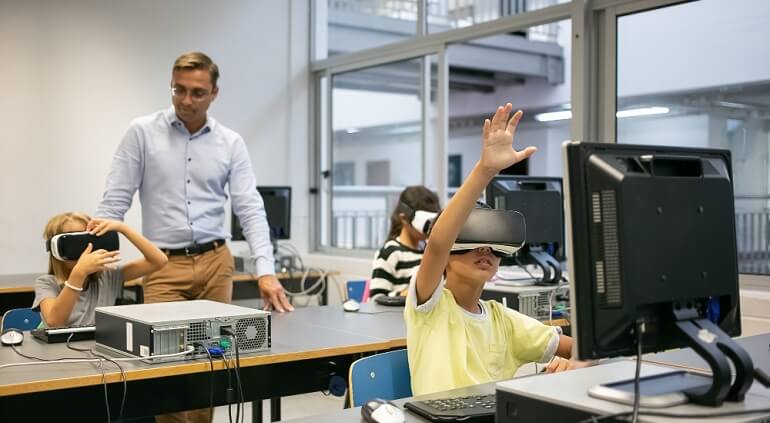Every year, advances in learning methodologies and strategies make the educational journey for pupils smoother. Technology has advanced significantly throughout time, enabling students to become more engaged in their studies and providing more enjoyable education opportunities, whether they are in high school or college. Pen and paper and face-to-face interaction were once considered fundamental components of any education. Electronic substitutes have taken over in the modern period, providing a more engaging and effective learning environment. With the advent of cloud storage, virtual classrooms, and print textbooks, education has become more accessible to students all around the world.
Electronic Books
Can you picture having to spend hours searching among the books at a library, without knowing which ones you would actually need for your research? Although it used to be a terrible reality, students now have the ease of using intelligent search engines to easily acquire information. They may get all the information they want on the Internet with just a reference or quotation. The cost of eBooks is lower than that of traditional paper books. Additionally, you may download it to your smart device so you won’t need to bring a heavy bag of books wherever you go. Rather, the laptop or tablet will have them loaded and available over the Wi-Fi network.
Internet memos
Using online notes is another creative approach to studying. Students may access a wealth of student Macquarie notes at Macquarie University, for example, which can be quite helpful with revisions and learning processes. Macquarie resources will provide all the learning information you need to make your classes more clear when you require trustworthy information and more in-depth insight into any lecture. Online notes will also significantly improve your achievement in college. All of the lectures from the courses that the institution provides are stored in online note databases, which makes studying for exams quite easy.
Online forms and cloud storage
Rather than lugging around many notebooks and running the danger of leaving homework at home, students may entrust their work to online cloud storage spaces. To ensure their secure online storage, all that has to be done is to complete the assignments electronically and submit them to cloud storage. By using online forms, students may communicate with their professors and fellow students as well as swiftly request any information they may need.
Platforms for virtual cooperation
Students throughout the world have been going through a time of adjustment with their learning practices ever since the COVID-19 epidemic occurred. Although they have been around for a while, virtual classrooms have become even more popular in the past year. Virtual classrooms provide not just the ease of distance study but also the opportunity for real-time communication through chat rooms and group projects. Not only can technology facilitate learning, but it also makes learning more enjoyable for all pupils. What was before a nuisance is now a genuine delight. Online storage spaces and collaboration platforms can help students who require additional time to grasp a subject by reducing their sense of intimidation and embarrassment at not having figured it all out. Away from their peers, they may study at their own speed. In the event that any student is having learning challenges, the kids can electronically turn in their work, automatically grade different assignments, and even send teachers early warning alerts.
LCDs
Another invention that helps children learn more effectively and quickly is the smartboard. These are a more creative take on a whiteboard that let you write on it using a physical or electronic marker. Furthermore, a smartboard may record all written material and even turn a digital marker line into a visual component. To take things a step further, you may have students manipulate graphics on a smart screen to suit their requirements and preferences.
Virtual reality
Pupils do not need to go to far-flung local locations or international nations on costly tours. Anyone may go to any location in a couple of seconds with virtual reality. Virtual reality (VR) gadgets are sweeping the globe, providing real-life experiences. Visual learners have the opportunity to learn more rapidly and with more enjoyment. Since it might be more challenging for students to attend in-person classes during a pandemic, augmented reality can be a useful tool for providing them with a 3D depiction of the material they need to study. They may also communicate with it in a virtual setting on top of that.
The rapid advancement of technology in recent years has almost eliminated the need for university education. Students’ lives are made so much easier in many ways by taking classes remotely and having access to all the course materials and notes online. Technology is becoming an essential part of every student’s life, from giving them access to real-world experiences to allowing them to learn at their own speed. Don’t forget to evaluate each technological development, though, since they shouldn’t take the place of conventional teaching techniques. Their sole purpose is to expedite the education process and help pupils meet their learning objectives more quickly.



